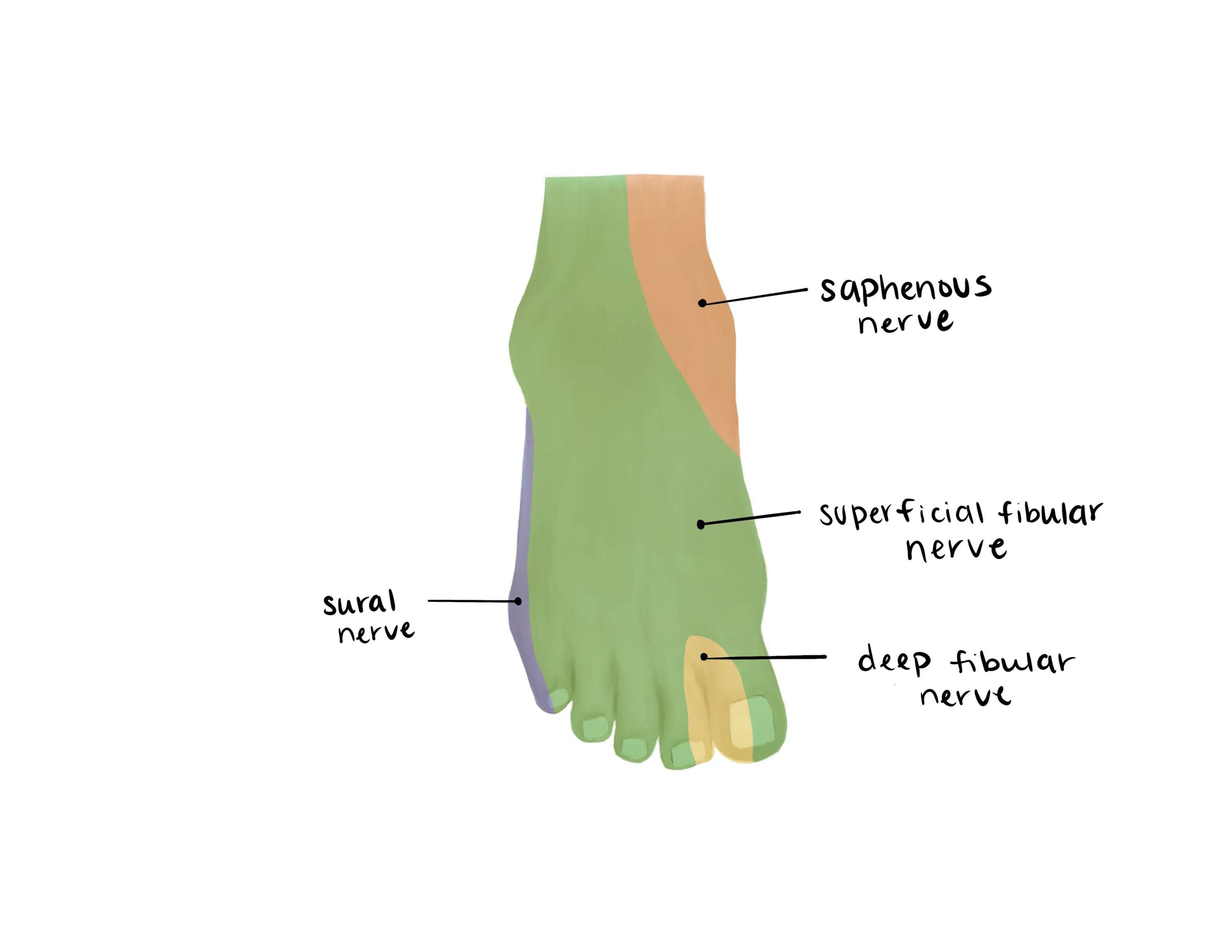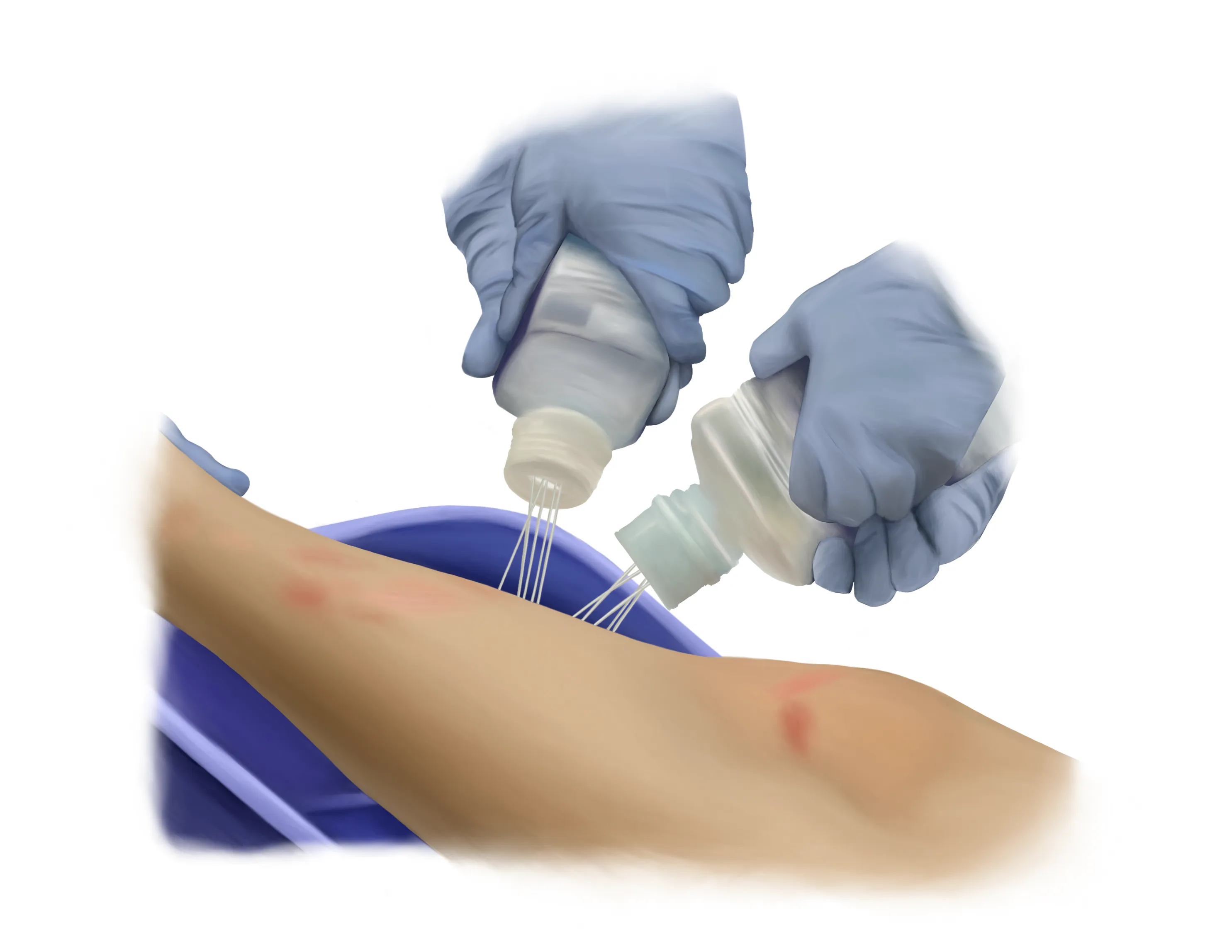Femoral Shaft Fracture
- Femoral shaft fractures are usually the result of high energy trauma
- A full trauma exam should be performed given that this is a major distracting injury
- Full secondary exam to prevent missed injuries
- Major blood loss can occur into the thigh
- Hemodynamic stability must be monitored
- Monitor for symptoms of shock
- 40% of patients eventually require transfusion
- Mandates an orthopaedic consult
- Patients are typically admitted for pain control and definitive (operative) treatment
- Mechanism
- Often high energy (MVA, gunshot, fall from height)
- Timing of injury
- Other locations of pain (distracting injury)
- Common distracting injury
- Groin pain - concern for concomitant femoral neck fracture (hip fracture)
- Large operative implications and may lead to poor outcome if missed
- Concomitant femoral necks may occur in up 9% of cases and are frequently initially missed
- Numbness and tingling
- Antecedent leg pain
- Should alert consideration of pathologic fracture, especially with a low energy mechanism
- Anticoagulation
- Time of last dose
- Last time patient last ate (NPO status)
Vitals
- Remove any splint/wrapping
- Basic appearance (swelling, bruising)
- Assess for poke holes or punctate wounds as the femoral spike can protrude through the skin at the time of injury and auto-reduce prior to presentation → open fracture
- Do not miss this and ensure (2-3g) ancef and (5mg/kg) gentamicin are given
- Even though these wounds are typically < 10cm, these are considered Gustilo III open fractures due to the high energy required to push the femur out the large soft tissue envelope
- Pain with logroll of the extremity
- Be wary of groin pain
- Concerning for ipsilateral femoral neck fractures
- Palpate the compartments (anterior, posterior, adductor) in the leg
- Good to establish baseline, as subsequent bleeding and edema can develop into compartment syndrome after presentation
- Lower risk than lower leg due to increased soft tissue space
- Palpation of all four extremities to identify other concomitant injuries
- Typically high energy, distracting injury
Motor Exam:
-
Motor Exam:
- Tibialis Anterior - Dorsiflexion
- Gastroc/Soleus - Plantar flexion
- EHL/FHL - Extension/Flexion of the great toe
- Sural (Lateral)
- Saphenous (medial)
- Superficial Peroneal(dorsum)
- Deep Peroneal (1st web space)
- Tibial (plantar)
- Vascular Exam:
- Dorsalis Pedis/Posterior Tibial
- Capillary refill to toes

- Motion at the hip and knee limited secondary to pain
- AP pelvis (per ATLS protocol), AP/L ipsilateral hip, AP/L femur, AP/L knee
- If concerned about concomitant femoral neck with equivocal XRs, obtain a CT scan to assess for occult fracture
- The entire femur should be imaged. Do not stop at a knee or hip simply because a femoral shaft fracture is evident.
- CT of the ipsilateral hip - not routinely needed
- Leave to discretion of orthopaedics
- Only needed if X-rays are equivocal and there is concern about an ipsilateral occult femoral neck fracture
Medical Decision Making
Closed femoral shaft fracture :
*** is a *** y/o ***M/F with hx of *** who presents with an injury to the ***R/L lower extremity which occurred while mechanism***, found to have a closed femoral shaft fracture. Associated injuries include ***. On exam, the patient is neurovascularly intact with pain on logroll. The injury was closed without any poke holes or punctate wounds that probe deep. The patient denied groin pain. Radiographs reveal ***. The patient was kept npo and last ate ***. Orthopaedics was consulted and will provide further recommendations.
Open femoral shaft fracture:
*** is a *** y/o ***M/F with hx of *** who presents with an injury to the ***R/L lower extremity which occurred while mechanism***, found to have an open femoral shaft fracture. Associated injuries include ***. On exam, the patient is neurovascularly intact with a laceration on the *** side of the leg that probed deep. The patient was given an immediate dose of IV ancef/gentamicin. The laceration was irrigated at the bedside for gross contaminants. The patient denied groin pain. Orthopaedics was consulted and the patient was made NPO. The patient last ate at ***.
Closed femoral shaft fracture:
- Consult Orthopaedic Surgery
- WB status: Non-weight-bearing injured lower extremity
- Diet: NPO
- Labs: ABG, Lactate (for high energy mechanism and polytrauma)
- Used to assess operative timing
- Analgesia: oral analgesia with IV narcotic for breakthrough
- Ex: 5-10mg oxycodone q4, 0.5mg hydromorphone q4 prn, tylenol 975mg q8hr scheduled
- Immobilization: None
- Orthopaedics may use skeletal traction
- If transfer is necessary, consider long leg splint
- Disposition: Likely admission to orthopaedics versus general surgery trauma
- If polytraumized patient often admitted to general surgery trauma
- Consult Orthopaedic Surgery
- Ensure IV antibiotics were given (ancef and gentamicin)
- Diet: NPO preop labs (type and screen, INR, aPTT, CBC, BMP)
- Labs: ABG, Lactate (for high energy mechanism and polytrauma)
- Used to assess operative timing
- Immobilization: None
- Orthopaedics may use skeletal traction
- If transfer is necessary, consider long leg splint
- Disposition: Likely admission to orthopaedics versus general surgery trauma
- If polytraumized patient often admitted to general surgery trauma

